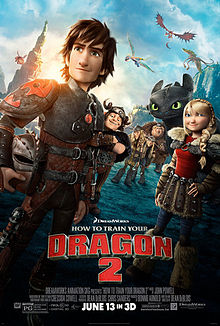Splintered by A.G. Howard
Amulet Books 2013
YALSA Teens' Top 10 2014
B
Summary from Goodreads: Alyssa Gardner hears the whispers of bugs and flowers—precisely the affliction that landed her mother in a mental hospital years before. This family curse stretches back to her ancestor Alice Liddell, the real-life inspiration for Lewis Carroll’s Alice’s Adventures in Wonderland. Alyssa might be crazy, but she manages to keep it together. For now.
When her mother’s mental health takes a turn for the worse, Alyssa learns that what she thought was fiction is based in terrifying reality. The real Wonderland is a place far darker and more twisted than Lewis Carroll ever let on. There, Alyssa must pass a series of tests, including draining an ocean of Alice’s tears, waking the slumbering tea party, and subduing a vicious bandersnatch, to fix Alice’s mistakes and save her family. She must also decide whom to trust: Jeb, her gorgeous best friend and secret crush, or the sexy but suspicious Morpheus, her guide through Wonderland, who may have dark motives of his own.
This book is everything that Tim Burton's Alice in Wonderland wanted to be. The Wonderland Ms. Howard creates is a darkly haunting place, where all of Lewis Carroll's creations have been transformed into maniacal and murderous creatures that cannot be trusted. Gone entirely is the sense of whimsy seen in the original books and the Disney adaptation, as well as any sense of satire. As such, purists may not care for this "sequel" of sorts, but it does have its merits.
This novel's greatest strength is the amount of intricate detail that Ms. Howard puts into everything from the scenery to the clothes that the characters wear. As someone who is not particularly visual, I appreciate when writers have a distinct vision of their world and painstakingly describe it to their readers. However, some might argue that too much focus is put on these details and not enough focus is given to the characters themselves.
I would probably agree that, creative and altruistic Alyssa aside, the main characters are one's standard YA fantasy tropes: the bad boy (Morpheus) and the stalwart friend-turned-lover (Jeb). I found both of these love interests to be problematic, albeit for different reasons. Morpheus manipulates Alyssa for nearly the entirety of the novel and is known to be quite the womanizer. Jeb, on the other hand, while loyal, often treats Alyssa like a kid sister and doesn't respect her autonomy. While teenage readers will likely swoon for both of them, Alyssa (and the readers) deserve better.
As publishers are wont to do these days, two more books have been written to form a trilogy. However, Splintered resolves itself pretty neatly, and I'm content to leave the characters as they are, rather than leave myself to the possibility of disappointment with another superfluous sequel.
Amulet Books 2013
YALSA Teens' Top 10 2014
B
Summary from Goodreads: Alyssa Gardner hears the whispers of bugs and flowers—precisely the affliction that landed her mother in a mental hospital years before. This family curse stretches back to her ancestor Alice Liddell, the real-life inspiration for Lewis Carroll’s Alice’s Adventures in Wonderland. Alyssa might be crazy, but she manages to keep it together. For now.
When her mother’s mental health takes a turn for the worse, Alyssa learns that what she thought was fiction is based in terrifying reality. The real Wonderland is a place far darker and more twisted than Lewis Carroll ever let on. There, Alyssa must pass a series of tests, including draining an ocean of Alice’s tears, waking the slumbering tea party, and subduing a vicious bandersnatch, to fix Alice’s mistakes and save her family. She must also decide whom to trust: Jeb, her gorgeous best friend and secret crush, or the sexy but suspicious Morpheus, her guide through Wonderland, who may have dark motives of his own.
This book is everything that Tim Burton's Alice in Wonderland wanted to be. The Wonderland Ms. Howard creates is a darkly haunting place, where all of Lewis Carroll's creations have been transformed into maniacal and murderous creatures that cannot be trusted. Gone entirely is the sense of whimsy seen in the original books and the Disney adaptation, as well as any sense of satire. As such, purists may not care for this "sequel" of sorts, but it does have its merits.
This novel's greatest strength is the amount of intricate detail that Ms. Howard puts into everything from the scenery to the clothes that the characters wear. As someone who is not particularly visual, I appreciate when writers have a distinct vision of their world and painstakingly describe it to their readers. However, some might argue that too much focus is put on these details and not enough focus is given to the characters themselves.
I would probably agree that, creative and altruistic Alyssa aside, the main characters are one's standard YA fantasy tropes: the bad boy (Morpheus) and the stalwart friend-turned-lover (Jeb). I found both of these love interests to be problematic, albeit for different reasons. Morpheus manipulates Alyssa for nearly the entirety of the novel and is known to be quite the womanizer. Jeb, on the other hand, while loyal, often treats Alyssa like a kid sister and doesn't respect her autonomy. While teenage readers will likely swoon for both of them, Alyssa (and the readers) deserve better.
As publishers are wont to do these days, two more books have been written to form a trilogy. However, Splintered resolves itself pretty neatly, and I'm content to leave the characters as they are, rather than leave myself to the possibility of disappointment with another superfluous sequel.








